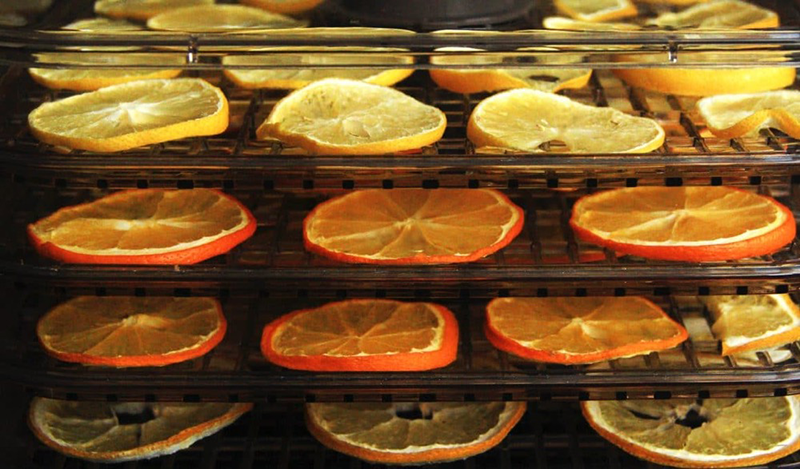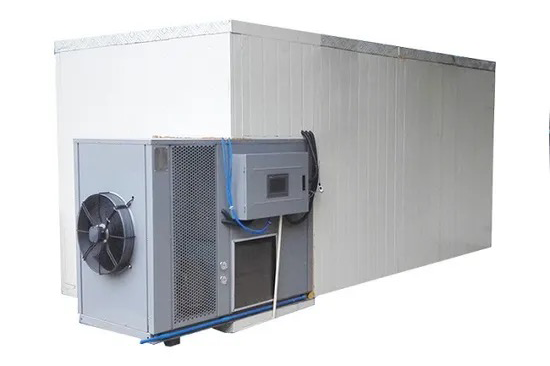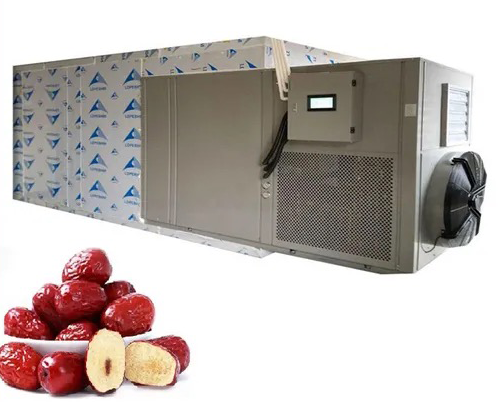
Content Menu
● Understanding Food Drying Technologies
>> What is a Heat Pump Dryer?
● Advantages of Heat Pump Dryers
● Considerations When Choosing a Heat Pump Dryer
● Comparing Heat Pump Dryers with Condenser Dryers
● Real-World Applications
● How Mumsnet Users View Heat Pump Dryers
>> User Testimonials
● Tips for Maximizing Efficiency with Heat Pump Dryers
● Conclusion
● FAQ
>> 1. What foods can be dried using a heat pump dryer?
>> 2. How does a heat pump dryer compare to traditional methods?
>> 3. Are there any drawbacks to using a heat pump dryer?
>> 4. Can I use a heat pump dryer for home use?
>> 5. How do I maintain my heat pump dryer?
● Citations:
In the world of food preservation, the choice of drying technology is crucial for maintaining the quality and longevity of products. As a manufacturer of food drying machines, understanding the nuances between different types of dryers, such as heat pump and condenser dryers, can help businesses make informed decisions. This article explores the benefits and considerations of heat pump dryers, particularly in the context of food drying, drawing insights from discussions on platforms like Mumsnet.

Understanding Food Drying Technologies
Food drying is a method used to preserve food by removing moisture, which inhibits the growth of bacteria, yeasts, and molds. Among various drying technologies available today, heat pump dryers have gained popularity due to their energy efficiency and effectiveness.
What is a Heat Pump Dryer?
A heat pump dryer operates by using a refrigeration cycle to remove moisture from food. It works by:
- Heating Air: The dryer heats air using a refrigerant that circulates through a compressor.
- Moisture Removal: The warm air is passed over the food, absorbing moisture.
- Condensation: The moisture-laden air is then cooled, causing water vapor to condense and be collected separately.
- Recycling Air: The cooled air is reheated and recirculated back into the drying chamber.
This process not only ensures efficient moisture removal but also maintains lower temperatures compared to traditional methods, preserving the nutritional value and flavor of foods.
Advantages of Heat Pump Dryers
Heat pump dryers offer several advantages that make them appealing for food processing:
- Energy Efficiency: These dryers consume less energy than conventional dryers. They recycle heat within the system, which reduces operational costs significantly.
- Gentle Drying: The lower drying temperatures help retain more nutrients and flavors in food products compared to high-temperature drying methods.
- Versatility: Heat pump dryers can be used for various products including fruits, vegetables, meats, and herbs, making them suitable for diverse applications in food processing.
- Environmental Impact: With lower energy consumption, heat pump dryers contribute to reduced carbon footprints in food production processes.
- Consistent Quality: The controlled environment of heat pump dryers allows for uniform drying across different batches of food. This consistency helps maintain product quality and reduces waste due to spoilage or uneven drying.
Considerations When Choosing a Heat Pump Dryer
While heat pump dryers present numerous benefits, there are also considerations that potential buyers should keep in mind:
- Initial Cost: The upfront investment for heat pump dryers can be higher than other types of dryers. However, this cost can often be offset by long-term energy savings.
- Maintenance Requirements: Regular maintenance is essential to ensure optimal performance and longevity of these machines. This includes cleaning filters regularly and checking seals for wear and tear.
- Drying Time: Although energy-efficient, heat pump dryers may have longer drying times compared to conventional dryers due to their lower operating temperatures. It's important for users to plan accordingly based on their production schedules.
- Space Requirements: Heat pump dryers can be larger than traditional dehydrators. Businesses must consider available space when selecting equipment for food processing operations.

Comparing Heat Pump Dryers with Condenser Dryers
When deciding between heat pump and condenser dryers for food processing, it's important to understand their differences:
| Feature | Heat Pump Dryer | Condenser Dryer |
| Energy Efficiency | High | Moderate |
| Initial Cost | Higher | Lower |
| Drying Temperature | Low (gentle on food) | High (can affect quality) |
| Drying Time | Longer | Shorter |
| Environmental Impact | Lower carbon footprint | Higher due to energy consumption |
Real-World Applications
Heat pump dryers are increasingly being adopted in various sectors:
- Commercial Food Processing: Companies are utilizing these machines to produce dried fruits and vegetables that meet consumer demand for healthy snacks. For example, producers of apple chips or dried tomatoes benefit from the gentle drying process that preserves flavor without adding preservatives.
- Home Use: More households are investing in heat pump dehydrators for personal use due to their efficiency and ability to produce high-quality dried foods. Home users can dry herbs for culinary use or create their own snack foods like banana chips or kale chips.
- Specialty Products: Artisanal producers often rely on heat pump technology to create unique products such as dried flowers or specialty teas. The ability to control temperature precisely allows them to maintain the integrity of delicate ingredients.
How Mumsnet Users View Heat Pump Dryers
Mumsnet has become a popular platform where parents share experiences regarding household appliances. Discussions around heat pump dryers often highlight user satisfaction regarding energy savings and product quality. Many users report that while the initial investment is significant, they appreciate the long-term benefits such as reduced electricity bills and superior product quality.
User Testimonials
- One user mentioned how switching from a conventional dryer to a heat pump dryer allowed her family to enjoy healthier snacks without added sugars or preservatives.
- Another user highlighted how the consistent results achieved with a heat pump dryer improved her meal prep routine, allowing her to store dried ingredients for longer periods without compromising quality.
Tips for Maximizing Efficiency with Heat Pump Dryers
To get the most out of a heat pump dryer, consider these tips:
- Pre-Treat Foods: Certain foods benefit from pre-treatment before drying. For example, soaking fruits in lemon juice can help preserve color and flavor during the drying process.
- Batch Processing: Group similar foods together when drying. This not only maximizes efficiency but also ensures that drying times are consistent across different items.
- Monitor Humidity Levels: Keeping an eye on humidity levels in your drying environment can help optimize performance. Lower humidity levels will enhance drying efficiency.
- Regular Maintenance: Schedule regular maintenance checks to ensure all components are functioning properly. This includes cleaning lint filters and checking refrigerant levels if applicable.
Conclusion
In conclusion, heat pump dryers represent an excellent investment for both commercial and home applications in food preservation. Their energy efficiency, gentle drying capabilities, and versatility make them a preferred choice among manufacturers and consumers alike. While the initial cost may be higher than other options like condenser dryers, the long-term benefits often justify this expense. As consumer awareness about health and sustainability continues to grow, investing in advanced drying technologies such as heat pumps will likely become increasingly advantageous.

FAQ
1. What foods can be dried using a heat pump dryer?
Heat pump dryers are versatile and can dry a variety of foods including fruits (like apples and bananas), vegetables (such as carrots and tomatoes), meats (like jerky), and herbs.
2. How does a heat pump dryer compare to traditional methods?
Heat pump dryers operate at lower temperatures than traditional methods, preserving more nutrients and flavors while being more energy-efficient.
3. Are there any drawbacks to using a heat pump dryer?
The main drawbacks include higher initial costs and potentially longer drying times compared to conventional dryers.
4. Can I use a heat pump dryer for home use?
Yes! Many households are now using heat pump dehydrators for personal food preservation due to their efficiency and quality output.
5. How do I maintain my heat pump dryer?
Regular maintenance includes cleaning filters, checking refrigerant levels, and ensuring proper airflow around the unit to maintain efficiency.
Citations:
[1] https://markwideresearch.com/convection-food-dryer-market/
[2] https://www.linkedin.com/pulse/what-advantages-using-food-dryer-ella-huang
[3] https://www.siemens-home.bsh-group.com.hk/en/appliances/laundrycare/tumble-dryers/comparison-heat-pump-dryer-condenser-dryer
[4] https://www.ike.cn/video.html
[5] https://www.youtube.com/watch?v=rR2G5UO-5Ms
[6] https://www.zionmarketresearch.com/report/food-dryer-market
[7] https://www.bestbuy.com/discover-learn/10-reasons-to-buy-a-food-dehydrator/pcmcat1634332391134
[8] https://www.greencentral.co.uk/heat-pumps/heat-pump-vs-condenser-dryer/
[9] https://www.youtube.com/watch?v=A5Nf2P7-nbU
[10] https://www.youtube.com/watch?v=lEUA2t2XD5M











